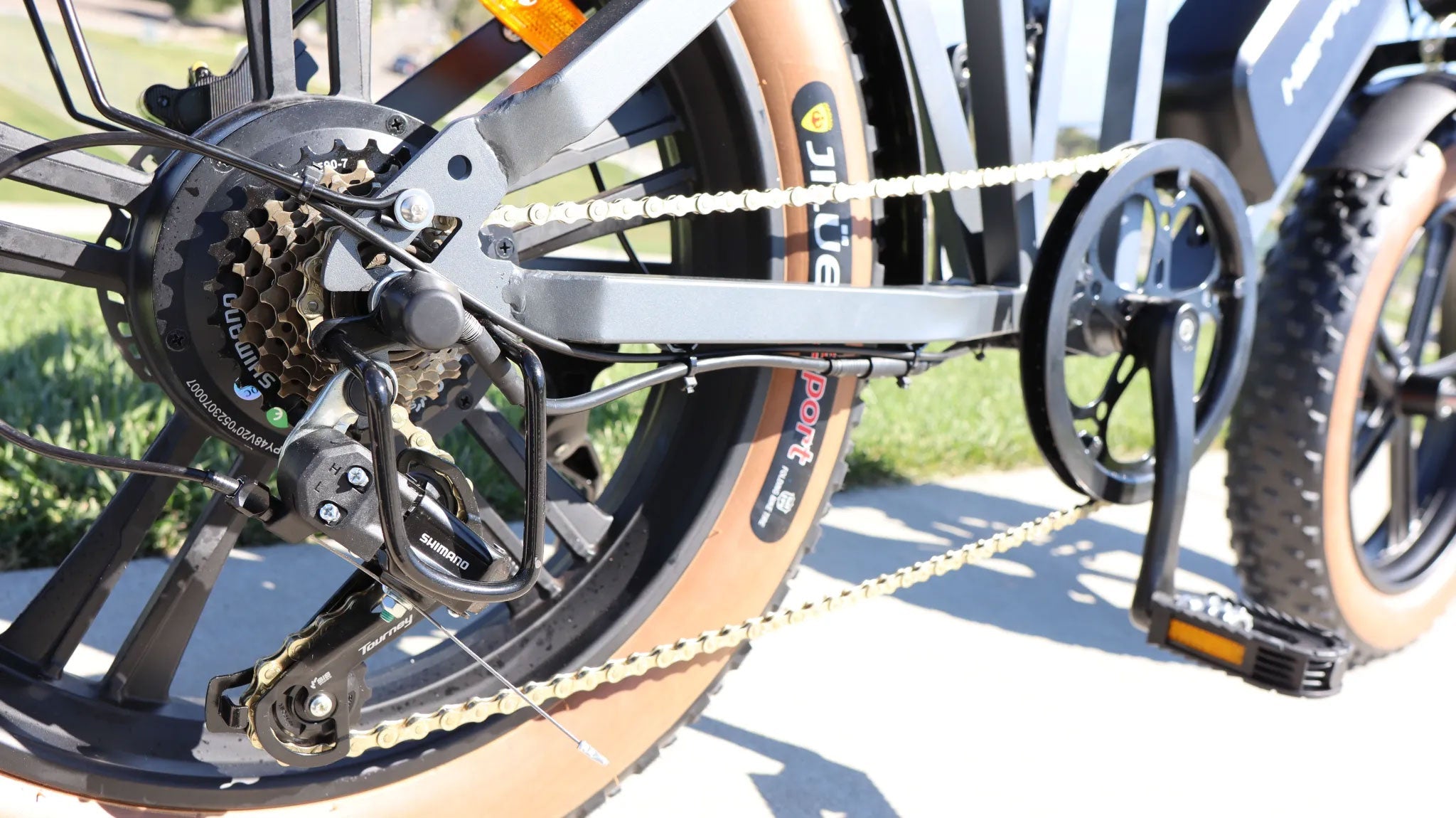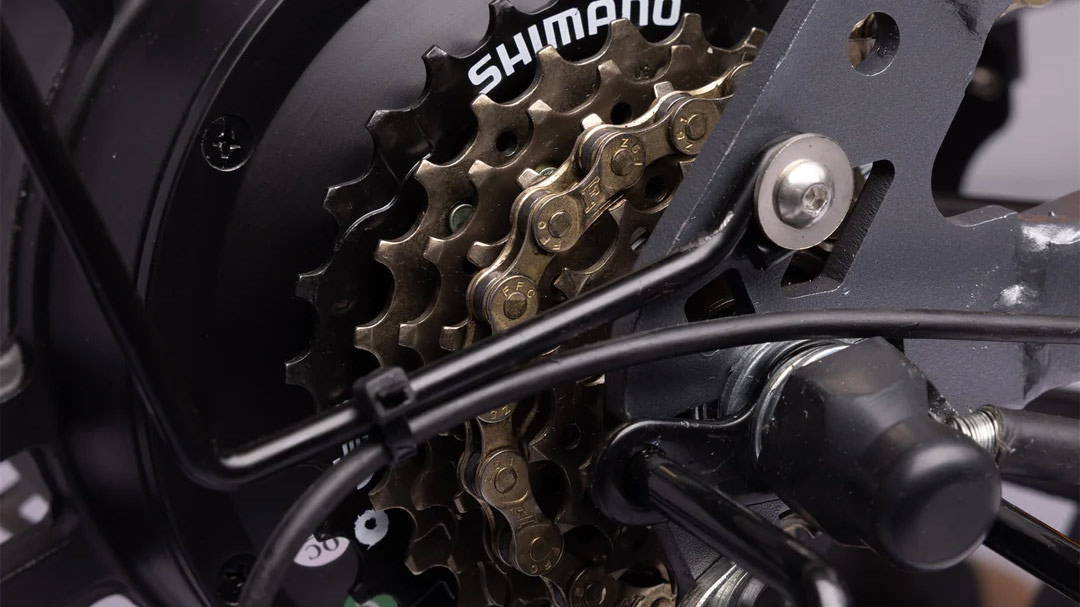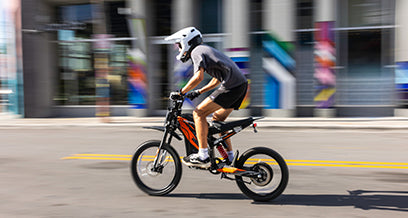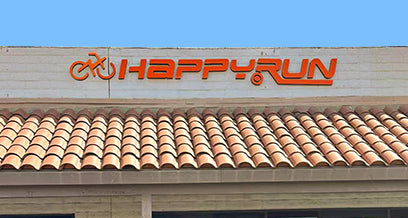
Locating Ebike Gears: Quick Overview, Tips & More
Getting a bike with a gearing system is exciting, but we know it can become a struggle for some. Learning which gear to shift to, when to use it and how to take care of the gearing system itself can sometimes be a lot, especially for new riders.
We want to help you out, which is why we wrote this easy, quick and highly detailed post for you about locating ebike gears and everything you need to know about them.
Get ready to become an ebike gear pro after reading this guide!
Gearing 101: How Your Long-Range Ebike Works
Most electric bikes feature derailleur gears. Depending on the gear selected, the chain will move up or down the gear sprockets to the desired high or low setting.
You know how the chain looks and where it’s located, but what about the rest of the components that make up the gearing system? Enter the chainrings, and the cassette.
In simple terms, the chainring (metal circle with teeth, located on the side of the bike, opposite to the gears) provides power to the drive wheel by engaging the bike chain. The number of teeth your chainring has will affect the speed and resistance level of your bike.
As for the cassette, it is located opposite the chainring and is responsible for “holding” multiple sprockets (gears) of different sizes. When you shift gears, the chain will move up or down this set of sprockets.
The chain doesn’t move on its own though, the front and rear derailleurs guide it between the chainrings and the cassette.
Finally, to shift gears on your ebike, you’ll have to use the shifters located on the handlebar. Depending on your ebike model, these can look like bike bell rings, or vertical handles.

HappyRun Electric Bicycle with 7 speeds
Understanding Gear Ratios for Efficiency
Throttle electric bikes are designed to cover extensive distances, and understanding gear ratios is key to having a comfortable and efficient ride. Here’s what you need to know about choosing the perfect gear for different situations.
If you want to climb a steep hill or go through an up-and-down path, we recommend you opt for a low gear ratio to reduce pedaling resistance. This allows you to easily navigate without having to put in a lot of effort which can result in excessive tiredness or risk of injury.
For your everyday city adventures, aka cruising on flat surfaces or descending, we advise you to choose a high gear ratio to maximize your pedaling efficiency. With this setting, you’ll be able to cover more ground with each pedal stroke.
Properly Shifting Gears On Your Electric Bike
Learning to shift gears on your ebike is something most new owners struggle with. But fear not, with a little Rust-eze (patience), and an insane amount of luck (practice), you’ll dominate gear shifting like a pro.
The key to shifting gears is to anticipate the terrain ahead. Using the general guideline provided above, you can determine which gear to shift to depending on the road.

HappyRun Electric Bike 7 Speed Shifter
Don’t be afraid to play around with all the gears until you find the best combo for your preferences and style. Plus, this way you’ll not only familiarize yourself with the gears themselves, but also with the action of shifting gears (stop pedaling, move your hand to the shifter, wait for the chain to go up or down, and continue pedaling).
Apart from this, we recommend you keep a constant pedaling tempo on each journey, no matter which gear you choose. Finding a comfortable rhythm will help you don’t lose your breath after 10 minutes of riding, and enhance your overall efficiency during long rides.
Don’t forget to conduct a regular maintenance routine on your ebike, especially on your gears. Include habits such as lubricating the chain, and keeping your bike free of dust and humidity.
Electric Assist Levels & Gearing
Ebikes feature both gears and electric assist, which gives you many options to play around with. But, as with common gears, finding the right balance between these two components requires a bit of patience, knowledge and practice.
If you’re climbing a steep hill, we recommend you choose a low gear setting and a low assist level to ensure optimal torque (twisting capacity of the engine) delivery. This combination will allow you to easily tackle obstacles.
For descents or flat surfaces, pair a high gear with a high assist level. This will maximize your effort, reducing the amount of times you pedal while covering more ground at the same time.
Which Electric Bike Should I Get
If you’re reading this, it means that you don’t have an electric bike or are looking to upgrade your current one. When it comes to choosing the best ebike model, the answer depends on a few factors, such as your budget, preferences and needs.
Determine how you’ll use your ebike (competing, commuting, etc) and how often. Once you have these two things narrowed down, you can establish a budget. After this, you’re ready to browse ebike models that align with your vision and affordability.
For experienced riders or riders who are not afraid to jump on a fast ebike, we recommend you check out our newest model, the Happyrun Full Suspension G100 Ebike. It can reach 38+ MPH and get you to cover 130+ miles range, among other fun things.
HappyRun Tank G100 Electric Bikes
Final Words
Locating the gears on your ebike is not just about visually seeing them, but also understanding how they interact with other components and where they’re located as well.
Properly shifting and using your gears according to the path ahead will help preserve your bike and the gearing system longer. With practice, patience and lots of rides you can master the art of ebike gear shifting.
Don’t be afraid to pair your gear options with some electric assistance, or go with a full motor-powered ride once in a while. Happy riding!
































Leave a comment